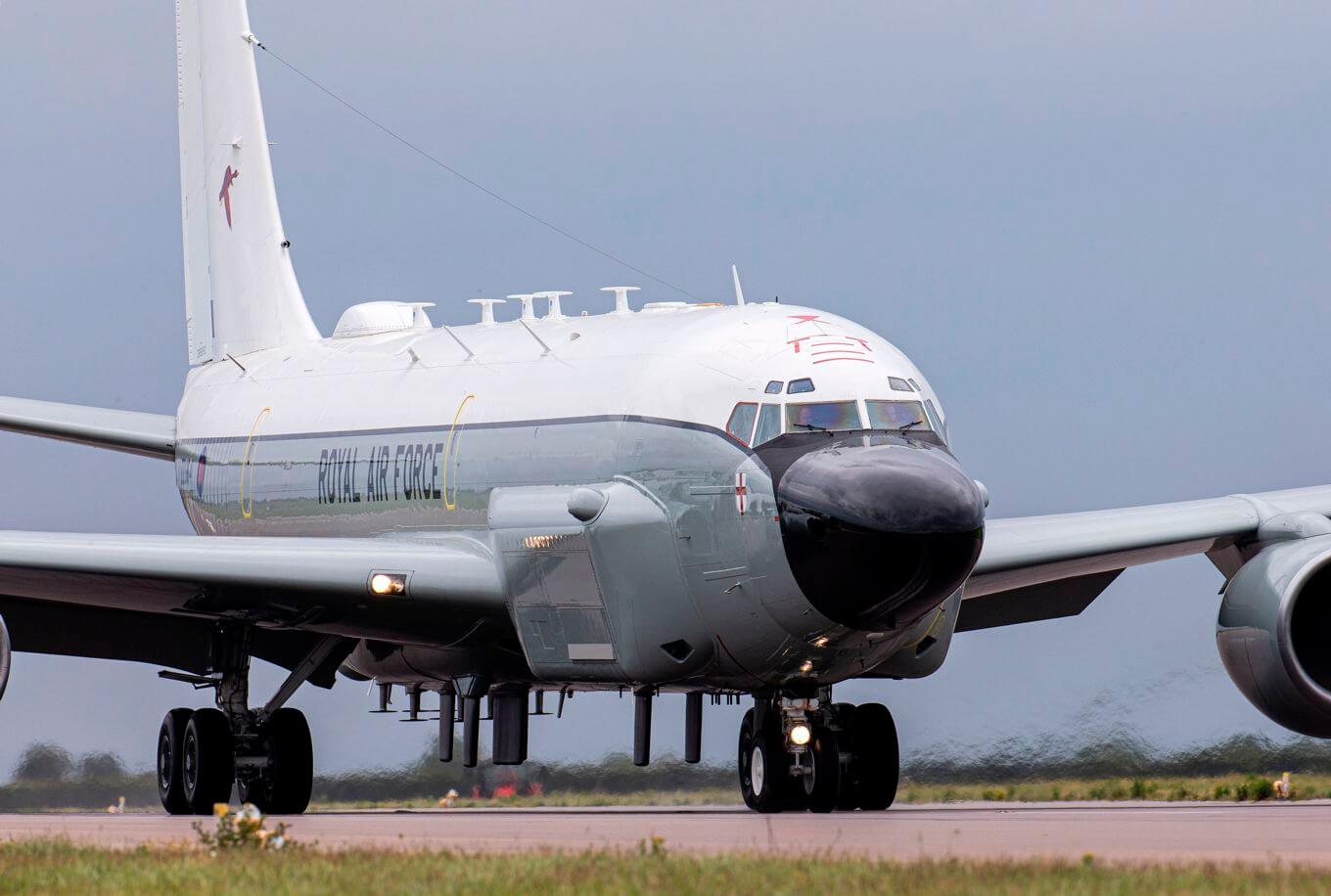On 29 September 2022, a Russian Su-27 Flanker fired an air-to-air missile near a British RC-135W Rivet Joint, then on patrol in the international airspace of the Black Sea. The official version blames a technical failure of the missile. However, recently revealed classified documents suggest a misinterpretation of the Russian pilot's orders, as he thought he had been ordered to shoot down the British plane. However, this version must be qualified on certain points in view of the facts put forward.
Incident Recap
On September 29, 2022, an RC-135W Rivet Joint on patrol in international airspace over the Black Sea was intercepted by two Russian Su-27 Flanker fighter aircraft. During this interaction, one of the Russian Flankers fired an air-to-air missile into the area near the Royal Air Force aircraft (more information in this article). This missile launch was taken seriously by the United Kingdom, which decided to continue the missions of its Rivet Joints over the Black Sea, under the escort of combat aircraft. The tension that this incident had caused had then been greatly eased, whether on the Russian or British side.
An information leak...
However, as explained in the New York Times, which is based on documents leaked from the Pentagon last week, the missile was really intended to shoot down the British RC-135W. Thus, while the intercept was in progress, one of the two Russian Su-27 pilots received a communication from a ground radar operator. The pilot then misinterpreted the communication and understood that he had been ordered to shoot down the British reconnaissance aircraft. The pilot would therefore have fired his missile, which, fortunately, malfunctioned.
... to be qualified!
Two anonymous American military personnel confirmed to the New York Times that the incident in question was very serious. In particular, one of the two servicemen called the shooting "really, really scary." However, the U.S. military has not confirmed the details put forward by the New York newspaper.
It's quite the opposite on the British Armed Forces side. An official, asked about the Pentagon leaks says: "A significant portion of the content of these reports is false, manipulated or both. We strongly caution anyone taking the veracity of this information at face value and also advise them to take the time to question the source and purpose of these leaks."
Moreover, the altercations with the Russian Su-27s in this region make it possible to confirm that these aircraft are armed with several missiles; why did they fire only one missile even though the pilot thought he had received the order to shoot down the English plane? This is moreover valid in short or long range; the official English version speaks of an air-to-air missile shot while the Russian fighter was beyond the horizon of the English RC-135W. However, Russian Su-27s usually carry two R-73 (AA-11 Archer) short-range missiles as well as two R-27 (AA-10 Alamo) long-range missiles.
In any case, a technical failure
Officially, the Kremlin speaks of a technical failure and Ben Wallace, the British Secretary of State for Defense, does not consider the incident as an escalation by the Russians. Unofficially, the leaked documents speak of a miscommunication between the pilot and the ground control. In both cases, doubt remains about the cause of the missile's departure, but in both versions, the missile suffered a technical malfunction preventing the destruction of the British plane: is this an isolated problem? Are Russian air-to-air missiles so poorly maintained that they are fired unexpectedly (official version)? Are Russian air-to-air missiles so poorly maintained that they cannot hook their target (unofficial version)?
It should be noted that the New York Times also reveals that the published documents state that between October 1, 2022 and February 2023, British, French and American airmen faced 6 events during which Russian fighter jets approached their aircraft from a distance of 6 nautical miles (11.112 kilometers) to 100 feet (30.48 meters). But as described above, official authorities refute the veracity (partial or total) of these documents.
Découvrez cet article sur Air&Cosmos

